By Philip Cauchi
Question - What do you look for when scouting/analyzing an opponent? Is there a series of questions the try and break down the opposing style of play?
Introduction:
Analysing opponents enables us to better understand how we need to prepare for matches to the least possible detail with the aim of achieving a positive outcome. By matching our team’s strengths and weaknesses with that of the opponents’ we learn what opportunities we have to win the match and how we can neutralize their strengths to reduce the risk of conceding goals.
Before getting into further detail, it is important to mention that it is not suggested to change our system completely for a single match. We just need to adjust the distances and angles between the players according to the exigencies. Some of the players might be given instructions that are specific to a particular match. However, these should not be told during the pep talk, but rather practiced and perfected throughout the week.
Let us take the following scenario as an example. Our team plays in a 1-3-5-2 system of play with building up from the back using the midfield as our main principle. If we play against a team who plays in a 1-4-4-2 diamond, they have less coverage on the flanks due to the close distance of the strategic positioning of their midfielders. If we have two wing backs who excel in 1v1 situations, we play with these two players higher up the pitch in search of penetration. This can be done as on the flanks we have more quality than our opponents. To remove the numerical inferiority in midfield we ask one of our strikers to drop in midfield and search for spaces between the lines, thus creating numerical parity. At the back we have three central defenders against two strikers, aided by the two central midfielders in front of them.
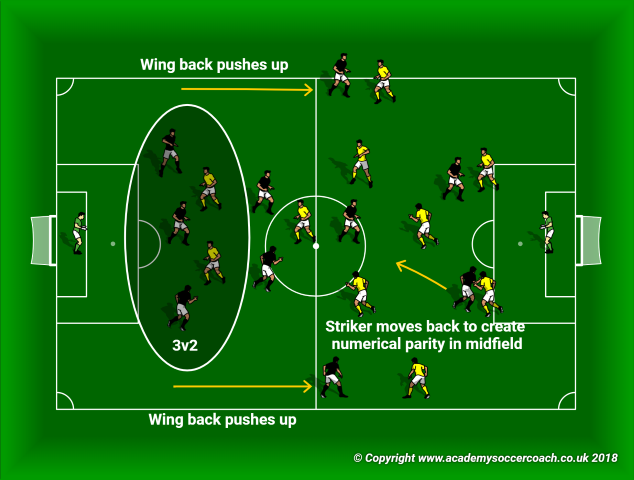
Now if we play against a more technical side and against a more offensive formation such as the 1-3-4-3, our formation would be slightly adjusted. We would ask our wingers to drop deeper, play with three midfielders in front of our defence, while the two forwards play vertical to each other with one of them acting more as an offensive midfielder. At the back we should be well covered with a numerical superiority of 5v3. In midfield we would outnumber them 4v2, therefore limiting them from creating scoring chances.
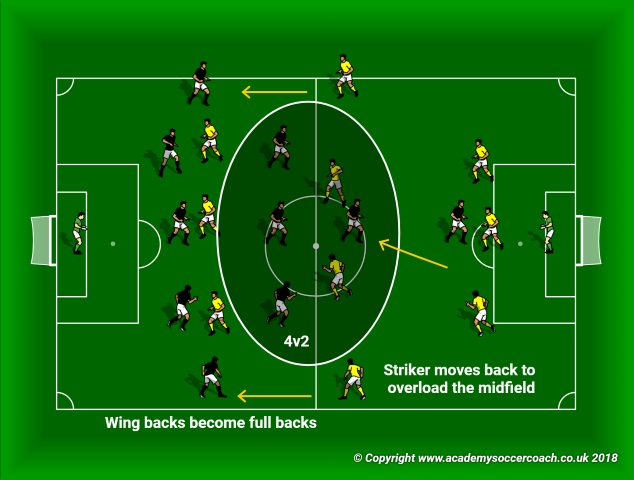
Formation:
The standard formation of the team we are scouting should be the first thing we need to identify. We should then map our formation against that of our opponents. Then we will be in a position to identify were we are stronger and where we are the most vulnerable. Here we also have to take into consideration the quality of our players compared with the opponents’ in specific zones of the field. From the below diagram – using a 1-4-4-2 as our team’s formation against a 1-4-3-3 – we can see that in midfield they outnumber us. As such one of our strikers should provide more support to our midfielders by dropping a bit back. This engages their defensive midfielder thus creating a numerical parity in midfield. At the front there is a 2v2 situation which can be further broken down into two 1v1s. Playing the ball to the striker will then increase our chances of scoring, especially if our strikers are dominant in the 1v1.
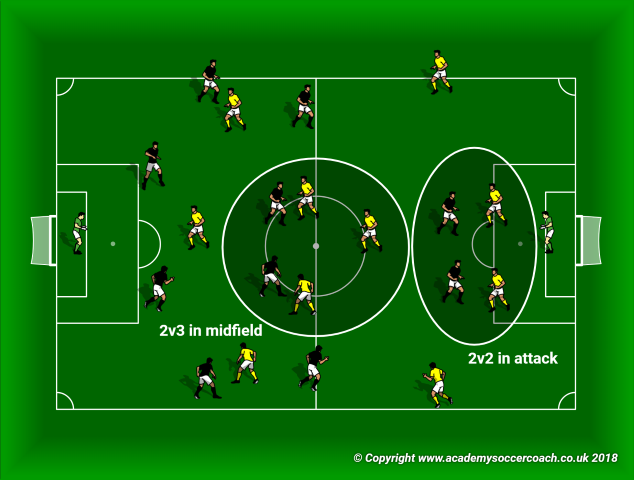
Match conditions:
The conditions of the match such as the weather, surface of the pitch and even if playing home or away should be recorded. If the pitch is wet and as such the ball moves faster, a team might opt to play short and secure passes rather than being direct. On the other hand if the pitch is soggy and therefore the movement of the ball is slow and unpredictable, there is a higher probability that the team presses more frequently. It is very important for us to record these details as we would have a head start should we have to play these team in the same conditions. This will help us anticipate how our opponents will behave in specific situations.
Players’ characteristics:
During the flow of play we should observe the characteristics of the players such as movement, positioning and playing tendencies. What are their technical strengths and weaknesses? How can we exploit these weaknesses? As an example it might be that their right full back hesitates under pressure and is more prone to commit mistakes. Therefore, we might want to invite our opponents to play the ball to this player and then press aggressively.
Build-up play:
Do our opponents prefer a short constructive build-up or do they play direct? Who are the key players during the build-up phase? Who is the team’s main playmaker? Is there any side and/or pattern which is dominant during the phase of possession? How are goal-scoring opportunities created? Are they more dangerous from particular situations than others? It can be that the opponents are more dangerous when delivering crosses than when trying to play vertically through the middle. One reason might ne that they have a centre forward who is tall, strong and dominant in the air.
Attacking strategy:
How many opposition players participate in attack? Where do these players aim to make their runs? Which is the dominant side their team attacks from? Who are their most dangerous players in attack? Do they have a target player who they depend on?
Pressing mentality:
Another important factor is to identify if the opponents press high or low? Do they maintain a high line? Do they aim to win possession high up the pitch, or do they re-group and defend deep in their own half? Do they attack in large numbers and thus press immediately after losing the ball? How many players do they leave at the back when attacking? Do they leave spaces at the back which we can exploit on a counter attack?
Vulnerability:
When analysing a team try to find a weak spot which we can exploit. For example, our opponents attack with both full backs pushing forward. This leaves space on the flanks for us to exploit. However, if we defend too deep we will find it hard to play forward as a result of lack of support in the length of the team. Our opponents might have a very strong midfield. This makes penetration from the middle very difficult. We should thus find a way to exploit the spaces on the flanks.
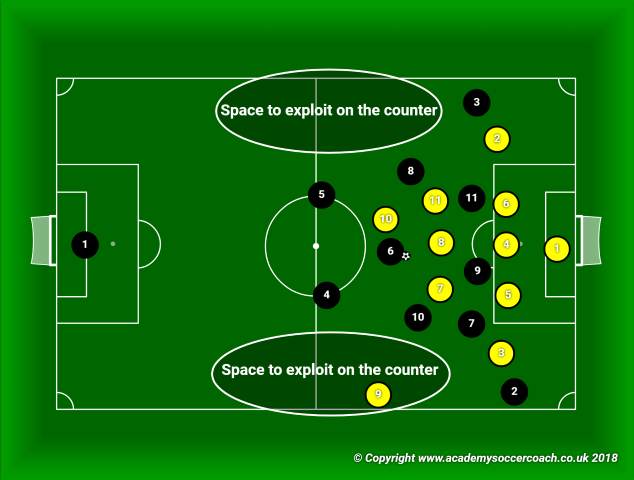
One way to do it is to let them push forward their defensive line. We would then leave one attacker on the ball side free and close to the touch line where he should have ample of space to receive on the counter. Our aim on winning the ball would be to play to the free player and provide immediate support
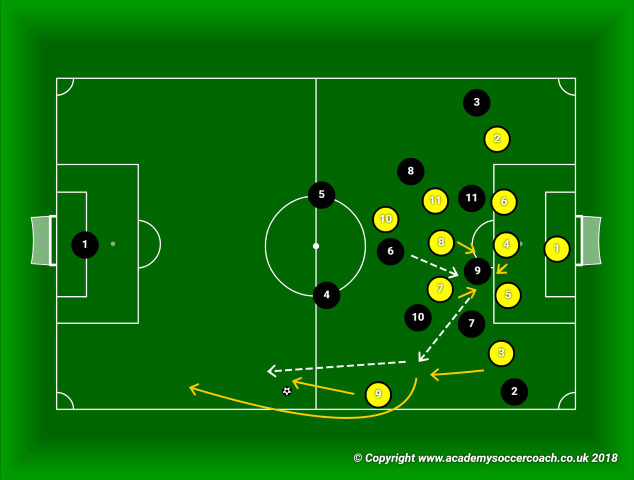
Set Pieces:
We divide set pieces into attacking and defending corners, and attacking and defending free kicks. In attacking corners the first thing to note is to which areas they typically aim the corner to be played, and if it is an in-swinger or an out-swinger. Do they play it directly or do they play it short to create a larger crossing angle? Do they play short passes instead while creating movements to free up specific players to receive in ideal positions? We then need to identify the potential receiving target players and any movements they make to get into position to attack the ball. We also write down how many players they leave at the back and which areas are open for a possible counter attack. According to the abilities of our players we plan how we are going to structure our team to counter their threats. How will we mark? Zonal, man-mark or a mix of both? We get to this answer only if we know our players well and exploit their strengths to the maximum in these situations.
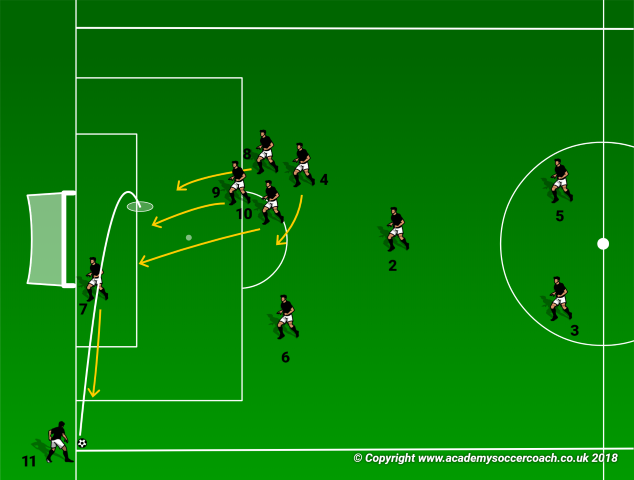
When we have a corner in our favour the need to identify their weakness in such situations emerges. Do they defend in a zonal, man-to-man or mixed? Are they strong and dominant in the air? What is our probability of winning the ball if we play directly into the penalty area? Which zone inside the penalty area is it best to play the ball into? Do we have players outside the penalty area who we can get the ball to or to be ready to attack second balls?
In the case of free kicks we divide them into those close to the penalty area and those further away. For short distance free kicks we need to identify if they have a good free kick taker. Which is his dominant foot, and to which part of the goal he typically aims? Our opponents might possess an excellent free kick taker who is right footed and takes charge of free kicks from the middle left side of the pitch close to the penalty area. We might thus consider putting a defender to cover this part of the goal.
For free kicks further away from the penalty area we need to identify if they play the ball directly towards the penalty area and if they have a particular target player/s. Let’s take a look at the below diagram as an example. Number 4 takes long free kicks. Their usual target player is the number 10, who is excellent in aerial duels. Therefore, the ball is typically played long towards the second post, while 9 attacks the first post and 7 moves towards the edge of the penalty area. Number 7 and 9’s movements are very dangerous! First because they create space for players 10 and 11 and secondly because they are ready to anticipate any balls deflected to the first post zone. Opponent number 6 remains outside the area ready to attack second balls. This player is very good at medium and long range shooting! Therefore preventing him from getting the ball is imperative. We also know that they leave five players behind the line of the ball. Armed with such information we can position the right players in specific zones inside and also outside the penalty area ready to deal with their direct opponent.
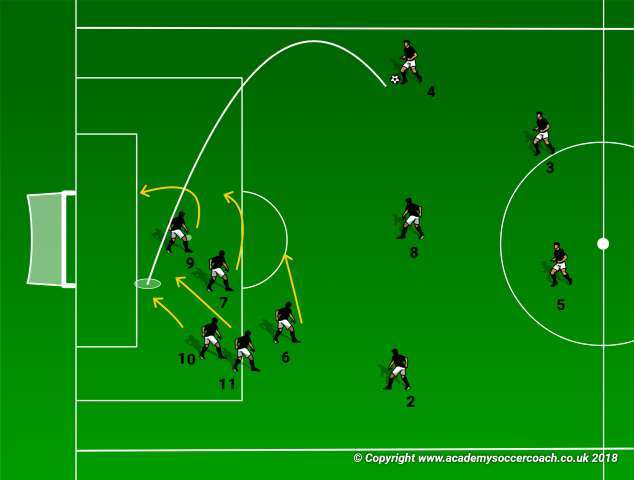
It is highly important to consider throw-ins to be taken by our opponents which are close to our penalty area. This is especially true if they have a particular player who can throw the ball long into our penalty area the same as if he was going to take a corner kick?
Conclusion:
Proper analysis of a team takes more than one match to complete. A team might have one or two key players missing for a particular match. Thus the information gathered will not be accurate. These players might be available to play against us and therefore getting the required information about them cannot be achieved if we haven’t seen them in action. Furthermore, by analysing a team over a couple of matches (at least five), we get a better picture of their game plan. We will get to know their strengths, their weaknesses and thus train our team to counter their strengths while capitalizing on ours.
Philip Joe Cauchi works as performance coach in Malta. He holds a UEFA A and a UEFA A Youth Elite coaching licences as well as a B.ed (Hons) in Education with Physical Education and is also a qualified football conditioning coach.


